1. Batra H, Yarmus L. Indications and complications of rigid bronchoscopy. Expert Rev Respir Med. 2018; 12(6):509–520. PMID:
29727208.
2. Dutau H, Vandemoortele T, Breen DP. Rigid bronchoscopy. Clin Chest Med. 2013; 34(3):427–435. PMID:
23993814.
3. Dumon JF. A dedicated tracheobronchial stent. Chest. 1990; 97(2):328–332. PMID:
1688757.
4. Dumon JF, Reboud E, Garbe L, Aucomte F, Meric B. Treatment of tracheobronchial lesions by laser photoresection. Chest. 1982; 81(3):278–284. PMID:
7056101.
5. Kim HJ. Airway silicone stenting in the management of tracheobronchial stenosis. Tuberc Respir Dis (Seoul). 2007; 62(2):95–97.
6. Bartlett-Pestell S, May J, Sharma A, Alonzo S, Barnes N, Madden BP. A 12-year experience in endobronchial intervention using rigid bronchoscopy - account of a tertiary referral centre. Monaldi Arch Chest Dis. 2022; 92(4):
7. Kim HJ, Kim SW, Lee HY, Kang HH, Kang JY, Kim JS, et al. Clinical experience of rigid bronchoscopy in single center. Tuberc Respir Dis (Seoul). 2012; 72(6):486–492. PMID:
23101015.
8. Mahmood K, Wahidi MM, Shepherd RW, Argento AC, Yarmus LB, Lee H, et al. Variable learning curve of basic rigid bronchoscopy in trainees. Respiration. 2021; 100(6):530–537. PMID:
33849039.
9. Pathak V, Welsby I, Mahmood K, Wahidi M, MacIntyre N, Shofer S. Ventilation and anesthetic approaches for rigid bronchoscopy. Ann Am Thorac Soc. 2014; 11(4):628–634. PMID:
24635585.
12. Myer CM 3rd, O’Connor DM, Cotton RT. Proposed grading system for subglottic stenosis based on endotracheal tube sizes. Ann Otol Rhinol Laryngol. 1994; 103(4 Pt 1):319–323. PMID:
8154776.
13. Prakash UB, Offord KP, Stubbs SE. Bronchoscopy in North America: the ACCP survey. Chest. 1991; 100(6):1668–1675. PMID:
1959412.
14. Colt HG, Prakash UBS, Offord KP. Bronchoscopy in North America: survey by the American Association for Bronchology, 1999. J Bronchology Interv Pulmonol. 2000; 7(1):8–25.
15. Shin B, Chang B, Kim H, Jeong BH. Interventional bronchoscopy in malignant central airway obstruction by extra-pulmonary malignancy. BMC Pulm Med. 2018; 18(1):46. PMID:
29534706.
16. Kim BG, Lee K, Um SW, Han J, Cho JH, Kim J, et al. Clinical outcomes and the role of bronchoscopic intervention in patients with primary pulmonary salivary gland-type tumors. Lung Cancer. 2020; 146:58–65. PMID:
32512274.
17. Kim BG, Shin B, Chang B, Kim H, Jeong BH. Prognostic factors for survival after bronchoscopic intervention in patients with airway obstruction due to primary pulmonary malignancy. BMC Pulm Med. 2020; 20(1):54. PMID:
32103738.
18. Ryu YJ, Kim H, Yu CM, Choi JC, Kwon YS, Kwon OJ. Use of silicone stents for the management of post-tuberculosis tracheobronchial stenosis. Eur Respir J. 2006; 28(5):1029–1035. PMID:
16971412.
19. Lim SY, Park HK, Jeon K, Um SW, Koh WJ, Suh GY, et al. Factors predicting outcome following airway stenting for post-tuberculosis tracheobronchial stenosis. Respirology. 2011; 16(6):959–964. PMID:
21605277.
20. Eom JS, Kim H, Park HY, Jeon K, Um SW, Koh WJ, et al. Timing of silicone stent removal in patients with post-tuberculosis bronchial stenosis. Ann Thorac Med. 2013; 8(4):218–223. PMID:
24250736.
21. Rosell A, Stratakos G. Therapeutic bronchoscopy for central airway diseases. Eur Respir Rev. 2020; 29(158):190178. PMID:
33208484.
22. Johnson RF, Bradshaw S, Jaffal H, Chorney SR. Estimations of laryngotracheal stenosis after mechanical ventilation: a cross-sectional analysis. Laryngoscope. 2022; 132(9):1723–1728. PMID:
34542167.
23. Dorris ER, Russell J, Murphy M. Post-intubation subglottic stenosis: aetiology at the cellular and molecular level. Eur Respir Rev. 2021; 30(159):200218. PMID:
33472959.
24. Ost DE, Ernst A, Grosu HB, Lei X, Diaz-Mendoza J, Slade M, et al. Complications following therapeutic bronchoscopy for malignant central airway obstruction: results of the AQuIRE Registry. Chest. 2015; 148(2):450–471. PMID:
25741903.
25. Ost DE, Ernst A, Grosu HB, Lei X, Diaz-Mendoza J, Slade M, et al. Therapeutic bronchoscopy for malignant central airway obstruction: success rates and impact on dyspnea and quality of life. Chest. 2015; 147(5):1282–1298. PMID:
25358019.

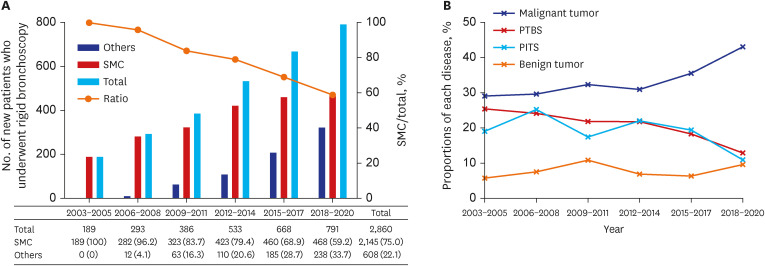
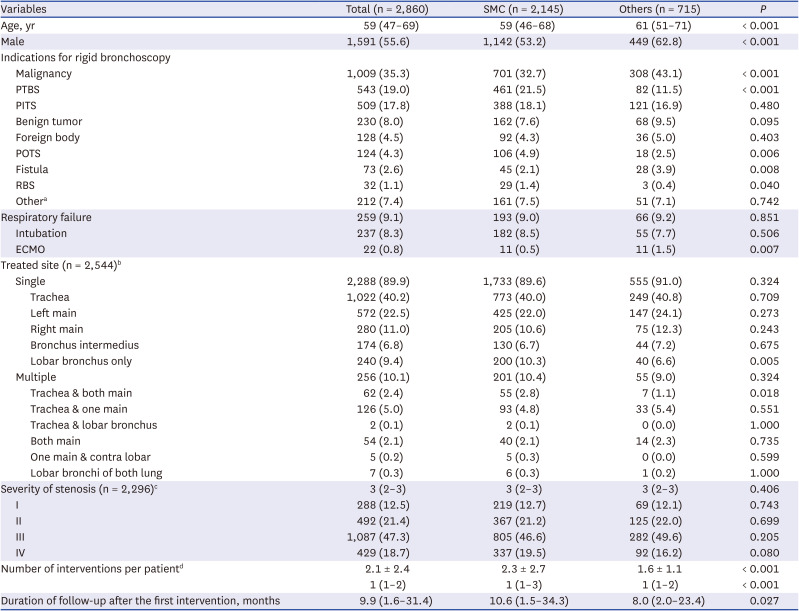
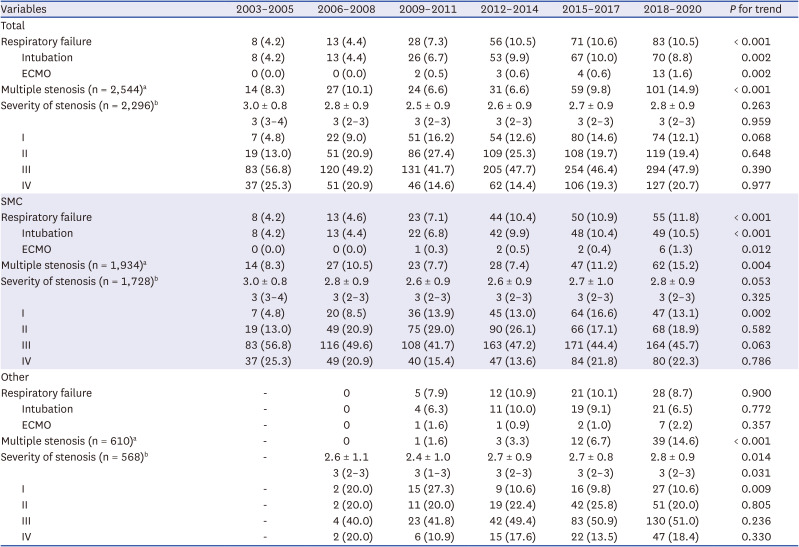
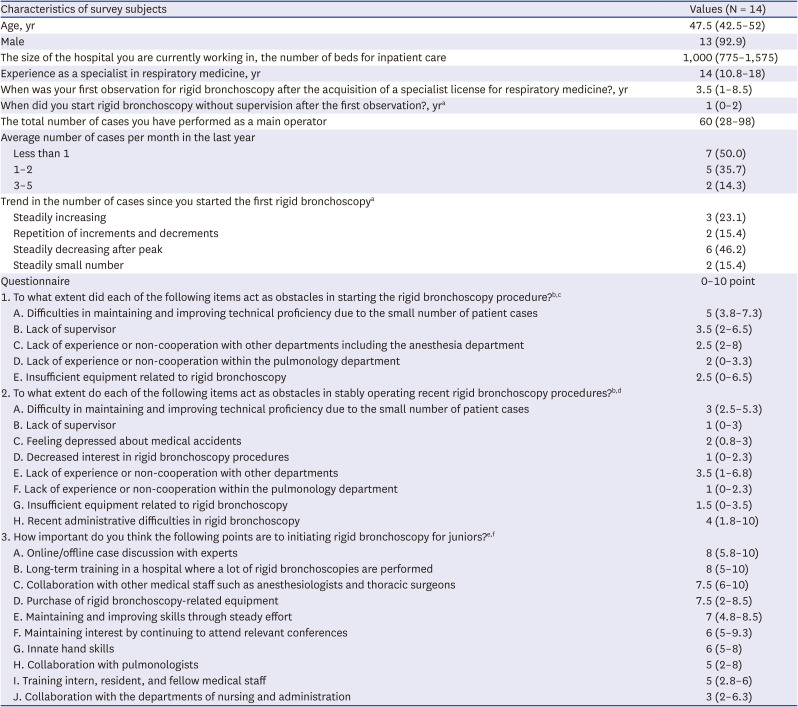
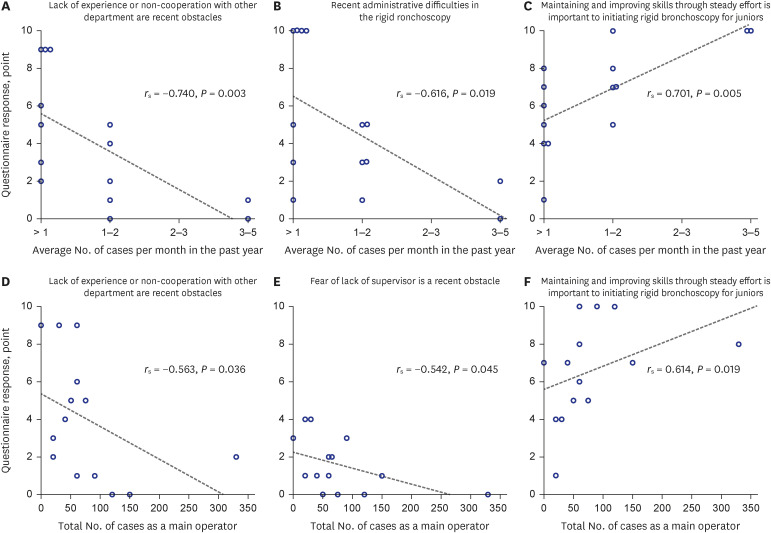




 PDF
PDF Citation
Citation Print
Print



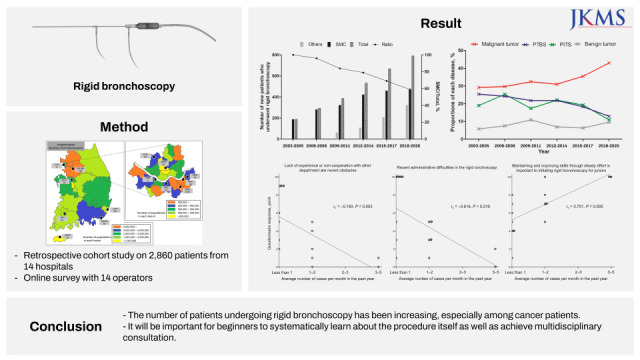
 XML Download
XML Download